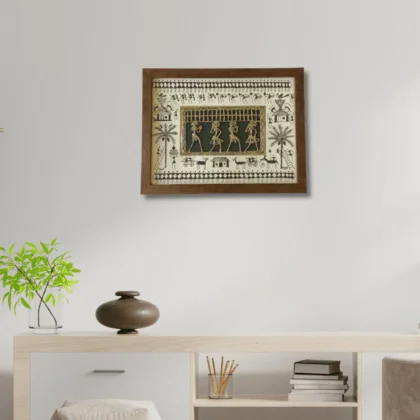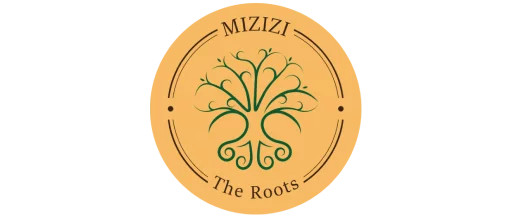India boasts a rich diversity of cultures, traditions, and artistic expressions, among which the Dhokra craft stands out as a globally renowned form of non-ferrous metal casting. This art form has been practiced for centuries by the Dhokra tribes of Odisha, and has its roots in the ancient Indus Valley Civilization. The intricate designs and patterns created through the lost wax casting technique of Dhokra are particularly notable, and the craft remains an integral part of India’s cultural heritage, especially in the Dhenkanal district of Odisha. In addition to Odisha, the Dhokra craft is also practiced in other eastern Indian states such as West Bengal and Jharkhand, further enriching the diversity of this ancient art form. Even today, Dhokra continues to captivate art enthusiasts and collectors around the world.
Mizizi, a brand that aims to promote tribal art and craft, has been doing its bit to preserve this traditional art form. Mizizi features a range of Dhokra craft products that are not just beautiful but also reflect the rich tribal heritage of India.
Let us understand the making of Dhokra Craft:
Dhokra craft is a traditional tribal art form from India. It involves making brass and bronze objects using the lost wax casting technique. The process involves creating a clay model, coating it in wax, creating a mould, melting the wax, pouring in molten metal, and finishing and polishing the final product. Dhokra craft is known for its intricate designs and is an important part of India’s cultural heritage.
Let’s understand the steps they follow:
Creation of a Clay Model: The artist first creates a clay model of the object they want to make. The clay model should be proportionate to the final product they want to achieve.
Wax Coating: The clay model is coated with wax, which is then shaped and carved to add intricate details and textures to the final product. The wax used in Dhokra craft is typically a blend of beeswax, resin, and nut oil.
Mould Creation: The wax-coated clay model is then covered with a mixture of clay and straw to create a mould. The mould is left to dry in the sun, which hardens the outer surface.
Melting the Wax: Once the mould has dried, it is heated to melt the wax and create a hollow space within the mould. The melted wax is drained out of the mould through a small hole.
Molten Metal Casting: Molten metal is poured into the hollow mould, and the mould is left to cool and harden. The metal used in Dhokra craft is typically a blend of brass and bronze.
Removing the Clay Mould: After the metal has cooled and hardened, the clay mould is broken away to reveal the final brass or bronze object.
Finishing and Polishing: The final stage of making Dhokra craft involves finishing and polishing the metal object to add shine and remove any rough edges. The finished product is a unique piece of art that reflects the skill and creativity of the artist.
Overall, the making of Dhokra craft is a complex and time-consuming process that requires skill and patience. The resulting objects are highly valued for their intricate designs and cultural significance.
Types of Dhokra Craft Mizizi offers:
Mizizi offers a range of Dhokra craft products that showcase the beauty and cultural significance of this traditional art form.
Dhokra wall frame: Tribal-inspired wall décor
One of Mizizi’s most popular products is the Dhokra-Saura Tribal Art wall frame. This stunning wall frame features intricate Dhokra work and depicts the tribal lifestyle and culture. The frame is perfect for adding a touch of tribal art to your home décor. You can buy Dhokra craft online from Mizizi’s website.

Dhokra bottle openers: Handcrafted bottle openers
Mizizi also offers unique Dhokra bottle openers, such as the Dhokra Bull-shaped Bottle Opener and the Dhokra Elephant trunk-shaped Bottle Opener. Both of these products feature small but intricate Dhokra designs and are not just functional but also make great conversation starters.
Figurines: Artistic figurines for your home
Mizizi’s range of Dhokra figurines includes the Dhokra Tribal Musicians (Set of 3), which are handcrafted using the Dhokra technique and depict tribal musicians playing traditional instruments. Another popular product is the Dhokra Ganesha miniature figure, which is perfect for adding a touch of spirituality to your home décor.
Table tops: Unique tabletop accents
For those who love collecting unique home décor pieces, Mizizi offers a variety of Dhokra table tops, such as the Handcrafted Dhokra Olive Turtle and the Dhokra Netted Table Top Owl. These products are not just beautiful but also showcase the rich tribal heritage of India.

Candle holders: Elegant candle holders for any occasion
Mizizi’s range of Dhokra candle holders includes the Dhokra Tortoise Candle Holder and the Dhokra Peacock Candle Holder, both of which feature intricate Dhokra designs and add a touch of elegance to any room.
Add a touch of rustic elegance to your home decor collection with Mizizi’s exquisite range of Dhokra craft products. Our commitment to promoting traditional Indian art forms through their products ensures that the legacy of Dhokra craft lives on. With Mizizi, you can own a piece of this beautiful art form and showcase it in your home as a symbol of India’s rich cultural heritage. So why wait? Browse Mizizi’s website today and discover the beauty of Dhokra craft.


